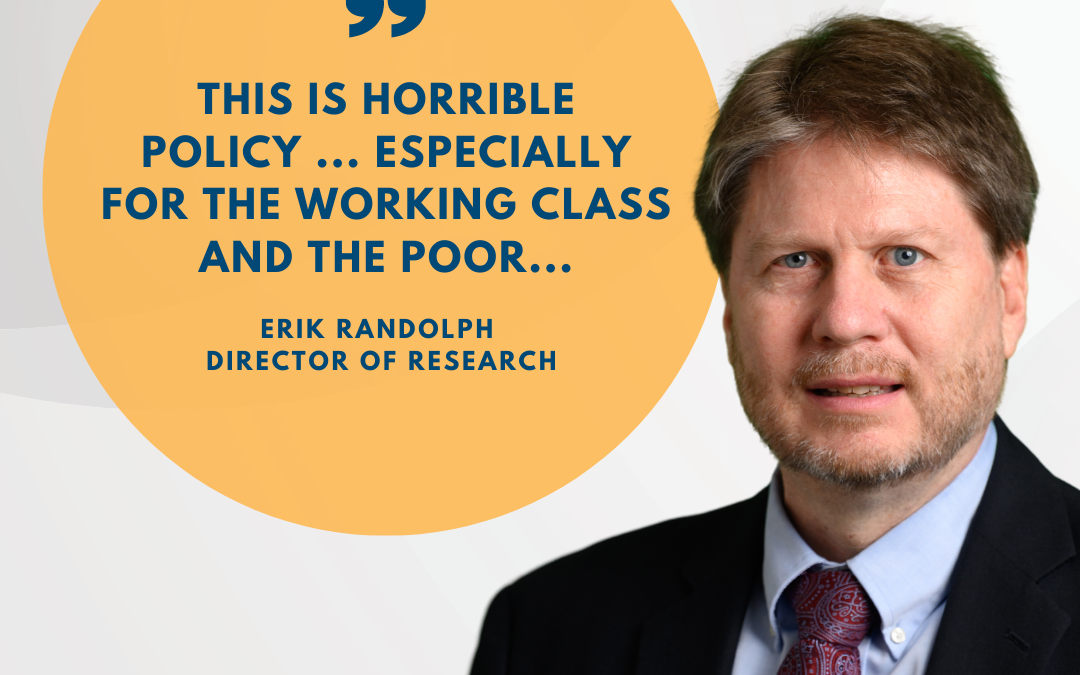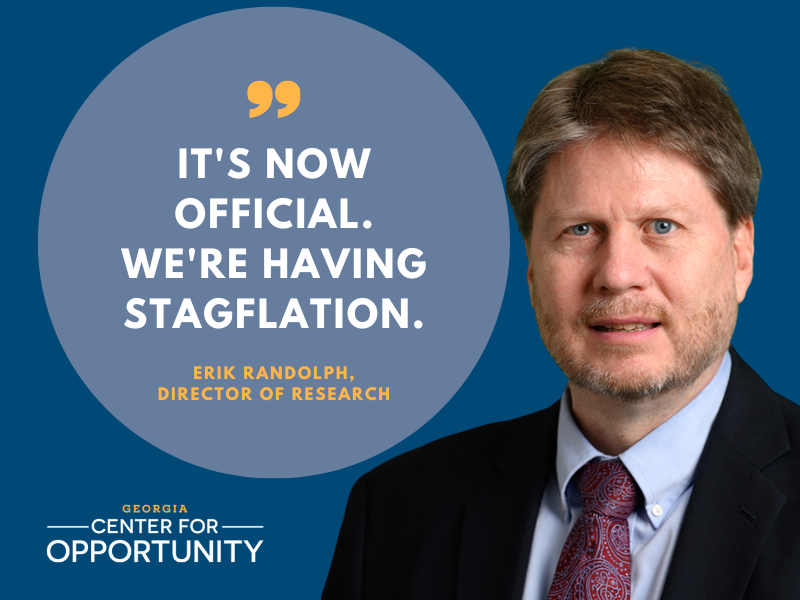
Media Statement: Decrease in the CPI is welcomed good news

Media Statement: Decrease in CPI is welcomed good news, but new policy is not good news for working class and poor
Today the U.S. Bureau of Labor Statistics announced that the Consumer Price Index (CPI) remained even in July, reducing the year-over-year inflation rate to 8.5%. That is a reduction in the rate from June, which was 9.1%.
The Georgia Center for Opportunity’s (GCO) take: “July’s ever-so-slight decrease in the CPI is a sliver of welcome good news in an economic environment where there doesn’t seem to be much good news,” said Erik Randolph, GCO’s director of research. “July’s price level — defined as the weighted average price across the board for goods and services purchased by households — ticked down 0.2% at an annualized rate. But we should pause before getting too enthusiastic about the news. The CPI is still 8.5% higher than 12 months ago, and it is unlikely that the miniscule CPI drop will turn into a sustainable trend. A big reason is federal policy. Congress is about to hike spending yet again with the erroneously named Inflation Reduction Act, and the Federal Reserve acknowledged that its goal is to just bring the inflation rate down to 2%, meaning they will take steps to prevent the price level from coming down from its elevated level. This is horrible policy on both accounts, especially for the working class and the poor, who carry a heavier economic burden with higher prices for what they need to purchase.”





